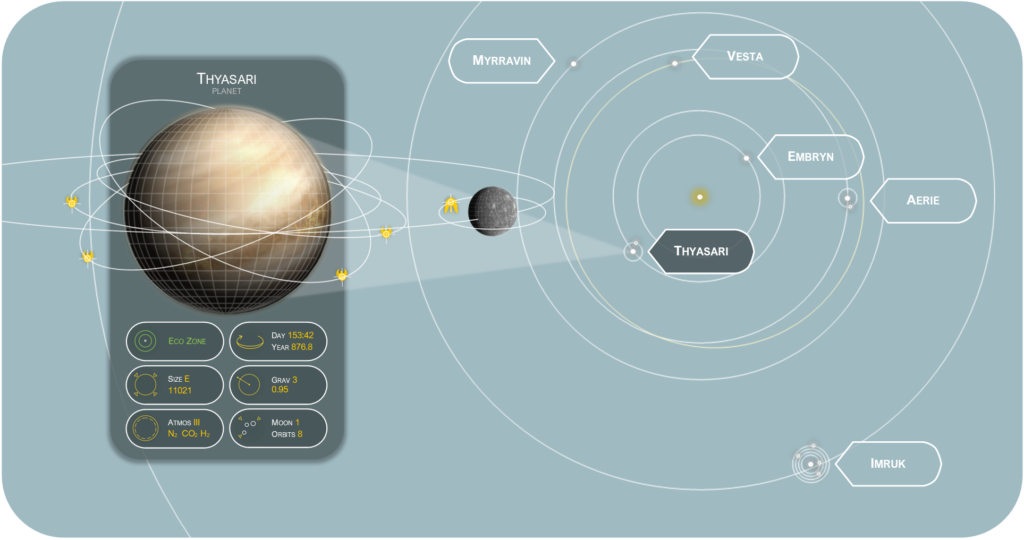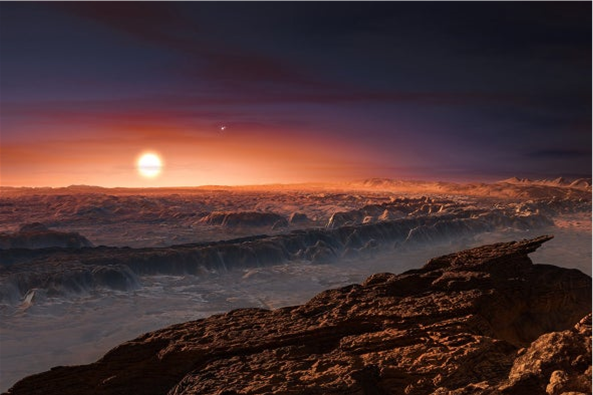
The Planet Thyasari
In the vast expanse of Aeriespace, Thyasari stands as the second celestial body orbiting around Anor, the radiant sun. This enigmatic world reveals itself as a nearly unadorned sphere of white, where only the most tumultuous weather systems manifest as textured swirls amidst the otherwise uniform cloud cover.
Climate
Perpetually veiled by a layer of clouds, Thyasari reflects a higher proportion of incoming sunlight, contributing to its distinct climatic conditions. The atmosphere bears a significant concentration of carbon dioxide (CO2), sparking a relentless greenhouse effect. The planet’s average surface temperature hovers around 65.6º C, with moderation at the poles to a more bearable 37.8º C, and soaring temperatures of approximately 73.9º C at the equator. The greenhouse effect results in minimal temperature differences between day and night, and seasonal variations are nearly inconsequential.

Ecosystem
Thyasari’s surface sustains a unique ecosystem, with plant life limited to colony-type organisms resembling Earth-style mosses. These entities create expansive carpets, hundreds of feet thick, exhibiting textures akin to finely woven rugs, and a vibrant palette of reds and oranges.
The animal life on Thyasari is exclusively reptilian, hosting a myriad of small lizard-like creatures with four to eight legs. These omnivorous scavengers feed on the carpet mosses and each other, often equipped with some form of poison. At the other end of the size spectrum are the larger denizens, including a populous creature indistinguishable from the mythical tarasque. While the true tarasque is believed to be unique, several hundred of these colossal monsters roam the surface of Thyasari.
The subterranean realm of Thyasari harbors a sizable population of myconids within its extensive network of lava tubes and caverns. These subterranean spaces serve as ideal environments for cultivating abundant crops of molds, slimes, and jellies.
Psyllie (moon)
The lunar surface of Psyllie is confirmed to contain various elements, including but not limited to hydrogen (H), oxygen (O), silicon (Si), iron (Fe), magnesium (Mg), calcium (Ca), aluminum (Al), manganese (Mn), and titanium (Ti).


